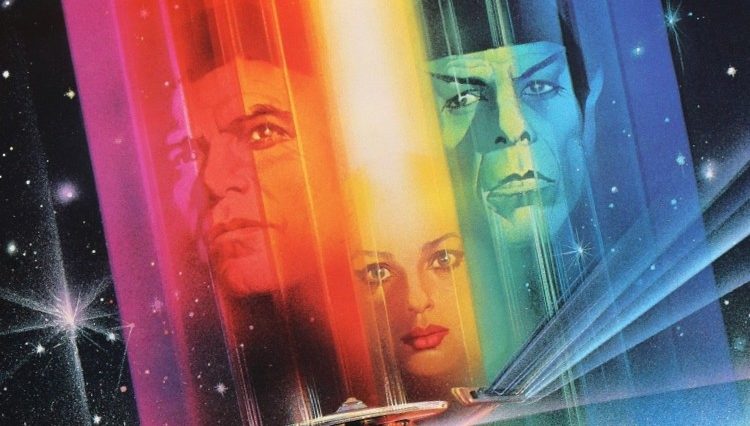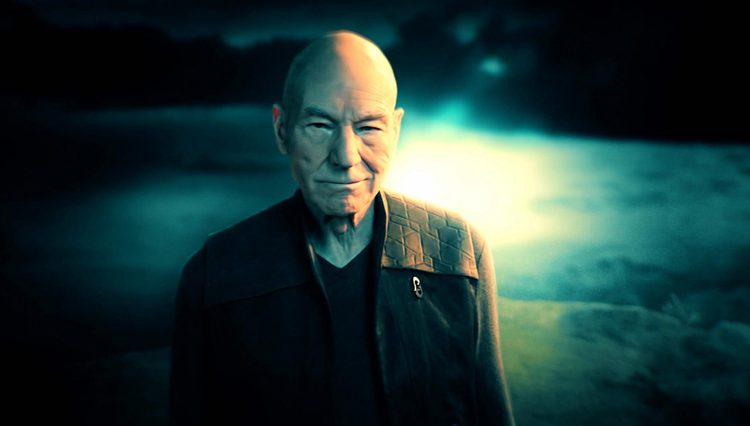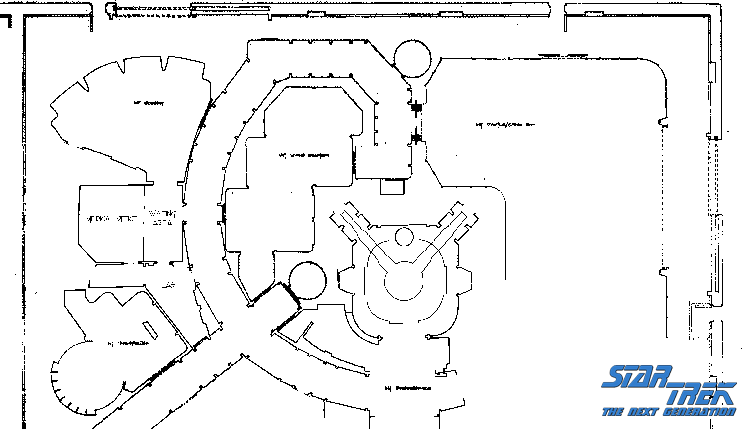
Did you ever feel like you had a friend who took it just a little too far? He or she is a bad influence on you. You have access to some equipment. Maybe you have a friend who knows somebody. Maybe you have a key. Maybe you work on the lot and you can sneak your friends into the studio with a camera. I don’t know the origin story of “Captain Stone,” nor would I care to know, but the Captain wants your camera and your key so that he can break into Stage 9 and saunter around the sets and pretend to be a member of Enterprise’s crew. Take off your 20th-century glasses first! Put on your uniform (or at least the one you’ve stolen from wardrobe) and give us a guided, painfully unrehearsed, and completely unauthorized tour of the U.S.S. Enterprise NCC 1701-D. I don’t care if you’re nervous, just get on with it. Do your job and get out of there before security calls the cops!
On March 10, 1988, at least two avid Star Trek fans broke into stage 9 on the Paramount lot to offer a guided video tour of some of the show’s sets. If you’re a quick thinker and you weigh all the pros and cons, you’re thinking about a fine and jail time, right? Always go with the worst-case scenario. I’ve done some crazy stuff in my youth, but I don’t think I’d ever involved myself in something as foolhardy as this. How does one go about sneaking into the Paramount lot, and allowed access into the holiest of holies — in this case, Stage 9 where Star Trek: The Next Generation was being produced? Easy answer? There was an inside man. I’ve seen the layout of the various stages. Stages 8 and 9 border 12th Street, Avenue P and Avenue M, across an alley from Technicolor; it’s possible you could do a mission creep with a bag full of cameras if you’ve cased the area multiple times to get an idea of security habits, bathroom breaks, and lunchtimes, but seriously, this is the gang that couldn’t shoot straight. Their luck knows no limitations. They even manage to turn on some crucial lights and add power to the sets.
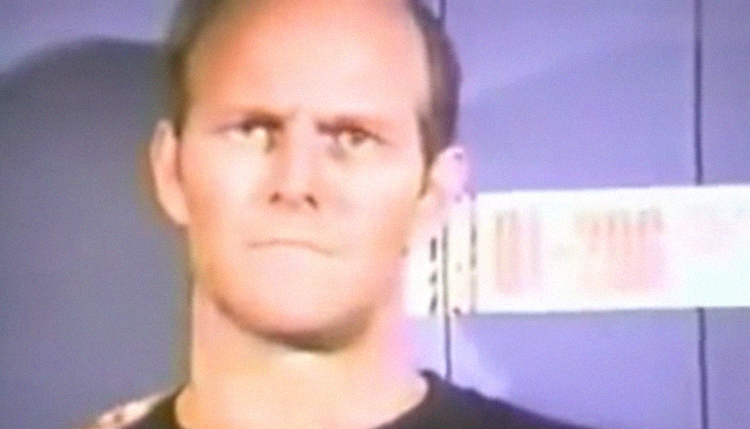
The first we see of “Captain Stone,” (he does not identify himself) he’s wearing a t-shirt with what looks like an MGM logo on it. The cameraman’s photography is a little blurry and he keeps engaging in banter about his focus and composition. “Stone” is kind of a built dude with a barrel chest and beefy triceps, but he has a bit of a muffin-top no doubt supplied by his tight jeans. He stands next to the prop command chair occupied by Commander Remmick from the episode, “Conspiracy,” (which, as confirmed by Memory Alpha and the camcorder’s time/date stamp, puts the recording date at March 10, 1988). He even puts one of the smaller prop parasite creatures on his shoulder for comedic effect. The season finale, “The Neutral Zone” would be shot a week later. Based on his wanting to get everything right, “Stone” is determined to achieve a transporter effect. Thankfully, he removes his glasses and slips into costume, but since his team was never able to recover this tape, the effect is not rendered, and therefore, not particularly effective.
We, as viewers (voyeurs), do get an idea of how certain sets work, and it is a bit of a, albeit naïve, letdown for fans to know that nothing actually worked; that transporters don’t actually transport, and the bio-beds in sickbay don’t diagnose and treat patients. The set is a ghost town, not brimming with activity and crew. “Stone” tries to lay down on one of Dr. Crusher’s bio-beds and his weight causes the whole contraption to fall over (the version I watched repeats the fall three times). Nothing built is meant to work. The show had only been on for five months, but “Stone” was a devout fan. He shows us various props and pieces of art decoration specific to certain episodes. He displays “okudagrams,” pieces of intricate (not to mention heavy) transparencies that could be inserted into lighted wall panels to indicate the status of ship systems, named after graphic designer Michael Okuda.
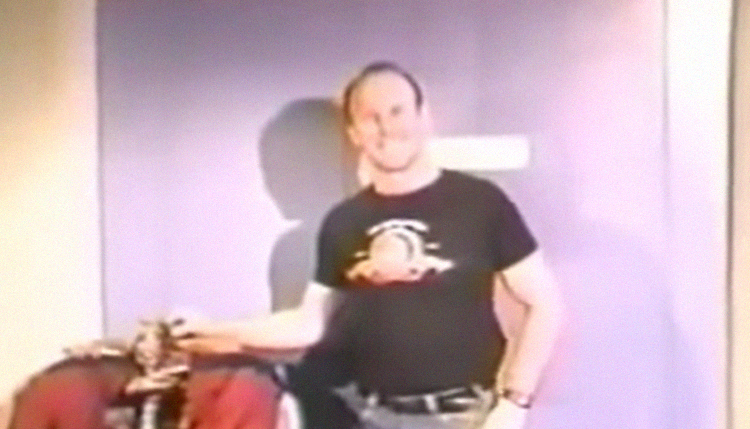
“Stone” manually operates the doors leading to the holodeck set and once again we are struck with the cold reality that none of this magic works until it has been lit, photographed, and recorded. After watching the video, I was left in awe of the massive job that would bring these sets to life. Consider for a moment that the great Patrick Stewart walked these corridors, sat in these chairs, spoke in his stage voice (not his real voice), and breathed life into the character of Jean-Luc Picard. This was before Star Trek: The Next Generation became the show that would continue for six more seasons, yield four theatrical motion pictures and spawn three spin-off television series. It was a flyer. A syndicated gamble. The sets look cheap under harsh practical lighting. There’s no artistry, no clever edits, or a music score to launch this starship, which beautifully illustrates the difference between what the actors and crew see as they perform, and what the audience sees when the product is finished.
The immediate aftermath of the video interests me. During a tour of the engineering section, the cameraman, somewhat calmly, walks off as another voice (possibly a security guard) yells in the background. “Stone” grabs the camera and that’s the end of the video. According to less-than-official accounts of the incident, the camera was left behind, but I don’t think so. If it were left behind, the camera might have been impounded and the footage destroyed unless it was forgotten for 19 years when the footage suddenly surfaced on social media. Why the long wait? With discreet editing, the footage would have made a lot of money on the bootleg circuit and in collectors’ circles. Or it could have been confiscated and secreted away because it embarrassed the security staff at Paramount. If you were running security at Paramount, would you want this footage out there for all to see? We’ll never know.
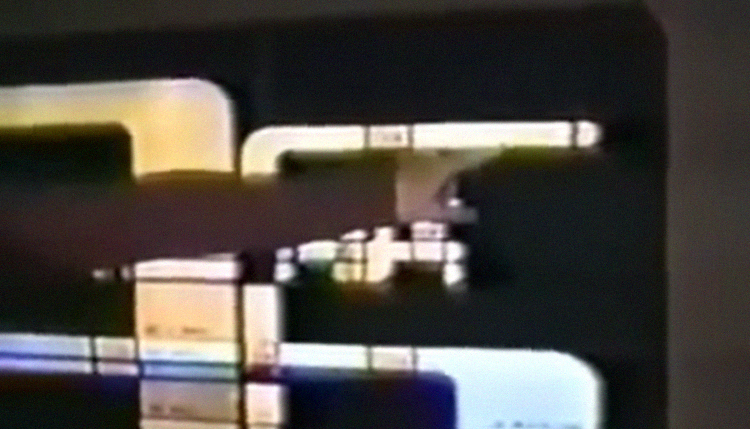
When the video surfaced on YouTube in 2007, almost immediately there was a great deal of hostility directed toward “Stone” and his cameraman. Critics (and fans) got on the bandwagon of deriding and castigating the “interlopers,” as though they themselves would not avail themselves of the opportunity to break in and shoot unauthorized footage of the Star Trek: The Next Generation sets. Accusations were even floated that “Stone” was either autistic or a mental defective. He doesn’t appear that way at all to me. He looks nervous, as well he should — he just broke into a Paramount soundstage.
In one article, the writer speculates that the uniform “Stone” wears is homemade, because no authentic uniform would have a zipper going down the front. That’s not exactly true. There were several variations of uniforms throughout the show’s run including uniforms with zippers in the front. To all of “Stone’s” detractors, I have just one question: How incredibly important is a television program that fans would willingly break the law just to get a look at the sets? I never read any stories about the “L.A. Law break-in,” or the “St. Elsewhere break-in.” Probably because nobody would care. Star Trek’s set was handmade. I’d love to see a movie made of this incident, in the vein of Man on Wire; a highly illegal action photographed for all the world to see, but where Philippe Petit was lauded for his courage and high-tension acrobatics on the top of the World Trade Center, “Stone” and his cohort were ridiculed.
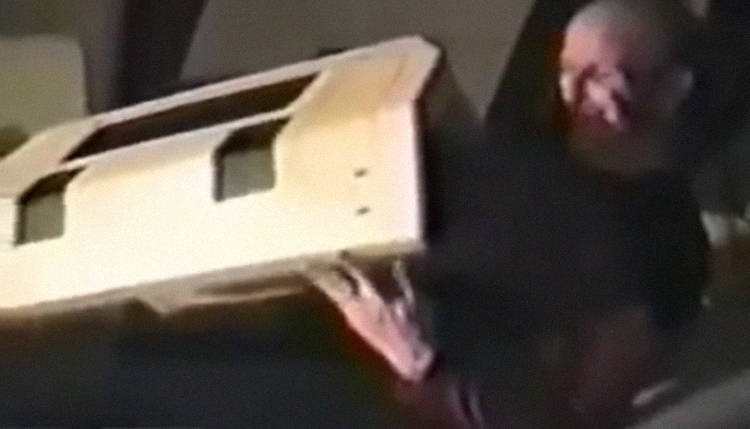
Celebrity, by its very nature, conveys a naïve over-simplification of the consumers that purchase and appreciate a product. Consumers (and fans alike) are regarded as disposable afterthoughts, much in the way consumers view celebrity, yet the fan has always had more power than the celebrity. The fan is the reason the celebrity (and the product) exists, and when inevitable tension arises from the attention the product receives, slander and ridicule become the last line of defense. Movies (and television, in particular) create an illusion of intimacy. Some fans feel a deeper connection to the players on the screen than they do with real people they know. Some of the more resourceful fans figure out how to bypass security and break into studios so they can sample curious delights unfettered by gatekeepers and spokespersons. The break-in at Stage 9 exists as a puzzling footnote in the history of Star Trek.
Twice a week, Star Trek Rewind explores the Star Trek universe. From Archer to Janeway, Kirk to Picard, and Georgiou to Sisko and Stone — boldly read what no one has read before!
For more insane Star Trek babble, check out my podcast (with co-host David B. Anderson), Ship to Ship: A Star Trek Podcast.


